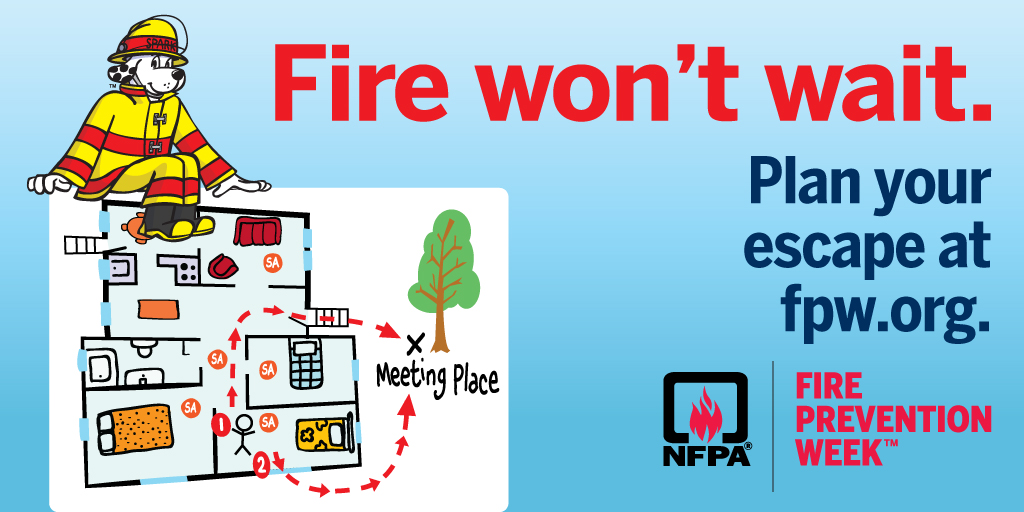On the 8th of October in 1871, the Great Chicago Fire began. In the time it burned, over 250 people were killed and another 100,000 were left homeless. It destroyed over 17,000 structures and burned over 2,000 acres of land. In commemoration of this devastating event, the second week of October has been designated as the annual Fire Prevention Week. The purpose of this week is to raise awareness of fire safety by educating the public with simple but important ways to protect themselves and others from home fires.
The 2022 NFPA campaign for Fire Prevention Week is “Fire Won’t Wait, Plan Your Escape.” In the case of fire, every second counts to safely escape.
“Today’s homes burn faster than ever. You may have as little as two minutes (or even less time) to safely escape a home fire from the time the smoke alarm sounds. Your ability to get out of a home during a fire depends on early warning from smoke alarms and advance planning.”
Lorraine Carli, vice president of Outreach and Advocacy at NFPA
This two minute timeline is based on the amount of time it takes for the thick black smoke of a fire to fill the home. Additionally, heat from fire is more threatening than the flames themselves, as room temperatures can increase to 1,000 degrees Fahrenheit. Having a preset escape plan is crucial. When preparing and practicing an escape plan, make sure everyone knows what to do and when, including who is responsible for those who need additional help. Factor in the ages, medical conditions, and accessibility needs of each family member when creating this plan.
Properly functioning and well-placed smoke alarms are key for early detection of a fire. These detectors can sense smoke before we can. There should be a smoke detector inside and outside each bedroom in the home, as well as on every level of the house – including the basement. Alarms near the kitchen should be placed at least 10 feet away from any cooking appliances to avoid false alarms. Additionally, make sure each alarm is listed with a testing laboratory. This indicates that the alarm met protection standards and will be most effective in case of fire. For the best protection, use alarms that are both smoke and carbon monoxide detectors and can be interconnected throughout the house, meaning that when one goes off, they all go off. This makes sure that, no matter where in the home you are, you can hear the alarm go off.
Key home fire escape planning tips:
- Make sure your plan meets the needs of all your family members, including those with sensory or physical disabilities.
- Smoke alarms should be installed inside every sleeping room, outside each separate sleeping area, and on every level of your home. Smoke alarms should be interconnected so when one sounds, they all sound.
- Know at least two ways out of every room, if possible. Make sure all doors and windows open easily.
- Have an outside meeting place a safe distance from your home where everyone should meet.
- Practice your home fire drill at least twice a year with everyone in the household, including guests. Practice at least once during the day and at night.
For additional information, check out these safety tip sheets. If you have been affected by a wildfire in Oregon or Washington or would like to learn more about how we can help, reach out to us today.


